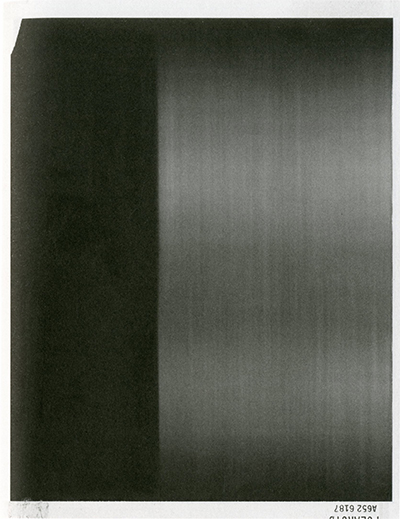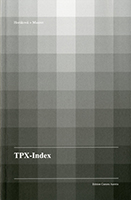| SIMON DENISON IMAGE & TEXT |
| PREVIOUS | NEXT |
TPX-INDEX Horáková + Maurer Edition Camera Austria, 2018 ISBN 978-3-902911-40-7 Pb
TPX-Index contains a set of experimental pictures made in the late 1990s by Vienna-based artists Tamara Horáková and Ewald Maurer, in which they used Polaroid TPX film designed for radiography as a ‘normal’ black-and-white film. Most depict views, of extreme banality, of the interior of their studio – an empty corner, part of a wall, a computer on a stand, an office cupboard – with each subject repeated across several images with minor adjustments to framing, staging and lighting. Most have faux-scientific titles giving place, subject, date, and length of exposure (often several hours). There are a few anomalies, with titles suggesting an urge towards metaphor: images of what appear to be soap bubbles (‘Luxe’), or of snails, slugs and prawns (‘Paralyzing Party’). Some are sharply focused, many are unsharp, several would be entirely indecipherable, blurred abstract patternings, were it not for a hint of indexicality in the title (‘North Wall’, ‘NW-Corner’). A few have horizontal or vertical lines running across them, like stills from a cathode TV screen, but why this is so is unclear. The images are presented without explanations, either of visual anomalies or artistic intent. Cognitively and aesthetically they hold the viewer at a distance; as does the manner of presentation in the book, with its low-contrast printing on matt paper like a cheaply produced technical manual. It is, presumably, a kind of postmodern game, an ironic use of a film-stock intended for diagnosis in such a way that signification is deliberately scrambled, or as reduced as possible. The use of the word ‘index’ in the book title underlines the irony. The effect seems to be to suggest that representation does not matter. Silver film reacts to light, that is all; light-marks are not records of significance but random, arbitrary, and meaningless. The artists have ‘intensively explored’ the film’s properties, the blurb tells us, but the book does not feel like research: no stated objectives, no clarity about methods, no demonstrable conclusions; and its nihilistic implications have questionable value for our understanding of photography as a whole. |
 |
|---|---|
| TPX-Index 13/ng40/Nordwand/1996-11-02 | |
 |